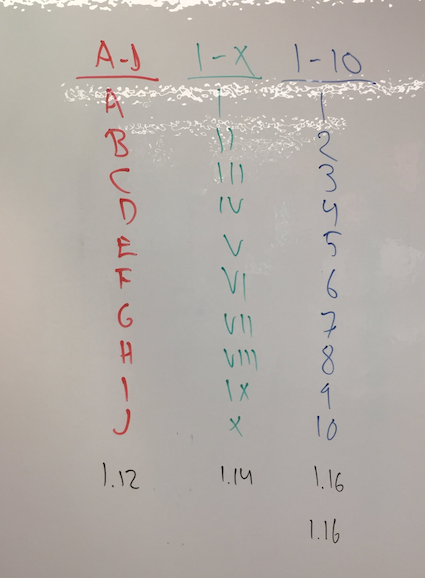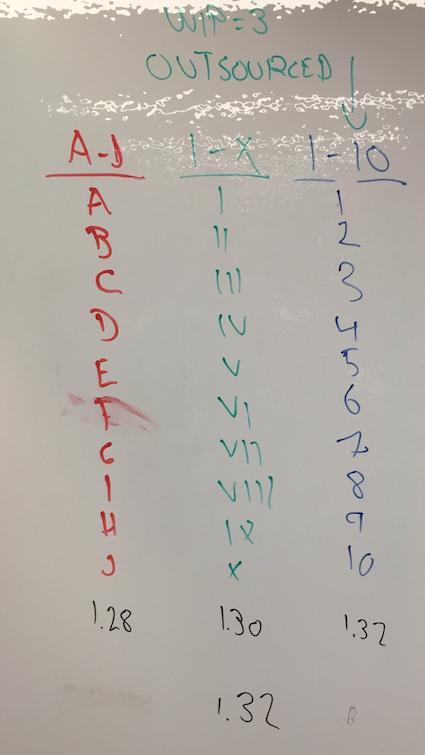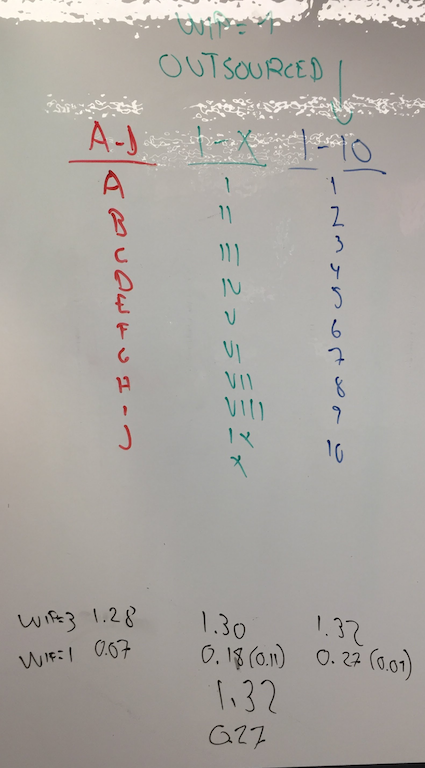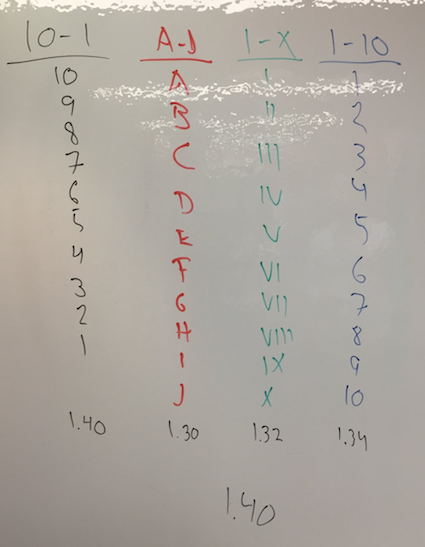When I conduct workshops on kanban/lean, I always include a game because I believe it enhances the learning experience. One of my favorites is the Number Counting game, which I once animated in PowerPoint. You can view it here.
This game vividly illustrates the benefits of limiting work in process (WIP) as the lead time for all projects significantly decreases, along with improvements in quality.
However, I’ve always been tempted to introduce some curve balls and changes during the exercise. Yet, I refrained from doing so due to the anticipated difficulty and stress. Recently, I tested some variations on myself and wanted to share the results with you.
Original game - my score
The game involves completing three columns with letters and numbers as quickly as possible. In the first round, the columns are completed row-by-row, resulting in longer lead times due to frequent pen switches. Here are my results:

I completed the task in 1 minute and 16 seconds, with the first project taking 1.12 seconds. Subsequent rounds saw significant improvements in lead time.
Variation 1 - outsourcing blue pen
In this variation, I simulated outsourcing one pen to illustrate the inefficiencies caused by such practices. The delay in fetching the pen penalized all projects. Here are the results:

With a WIP of 1, the results improved significantly:

Variation 2 - Adding more projects
Another variation involved interrupting halfway through to add a new urgent project, complicating the workflow. Here are the results:

While not disastrous, this variation increased lead times for all projects and added considerable stress.
Summary
These simple variations highlight the challenges of multitasking and the benefits of limiting WIP. They provoke important questions and emphasize the importance of focusing on the flow of value. Through these experiments, I gained valuable insights into lean principles and their practical applications.